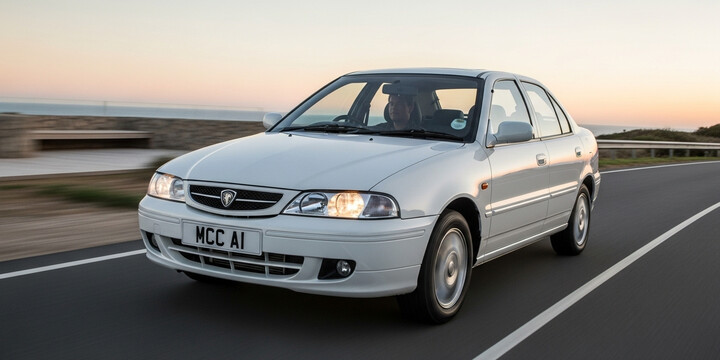
PROTON WIRA (2000-04) 4DR SALOON 1.5 LXI
The PROTON WIRA (2000-04) 4DR SALOON 1.5 LXI is a practical and affordable option for drivers in the UK seeking a reliable small saloon. Designed as a compact, family-friendly vehicle, it offers straightforward handling and a comfortable ride, making it suitable for daily commuting, city driving, or small family errands. This model is known for its simplicity, efficient fuel economy, and ease of maintenance, making it a good choice for first-time drivers or those looking for an economical used car.
What makes the PROTON WIRA 1.5 LXI stand out in its class is its modest running costs and approachable design. It’s often used as a practical, no-fuss vehicle for everyday travel, and its reputation for dependability benefits those who want a budget-friendly car with a low average mileage of around 55,502 miles. Compared to similar compact saloons, it’s appreciated for its affordability and straightforward nature. If you’re considering a reliable, low-cost used car, the PROTON WIRA 2000-04 4DR SALOON 1.5 LXI offers a balanced mix of practicality and value.

average use

The data for the most recent recorded mileages of Proton Wira (2000-04) 4-door saloons with a 1.5 LXI engine shows a fairly even distribution across various mileage ranges. Notably, the highest percentage of vehicles—28.6%—have a recorded mileage either between 0 to 10,000 miles or 20,000 to 30,000 miles, indicating that a significant portion of these vehicles are relatively low mileage. The remaining proportion (14.3% each) are spread across higher mileage brackets of 50,000 to 60,000 miles, 70,000 to 80,000 miles, and 90,000 to 100,000 miles. This distribution suggests that many of these vehicles are still relatively low mileage, which could be attractive to buyers seeking used cars with less wear.

vehicle values

The data indicates that the private sale price for a Proton Wira (2000-04) 4DR Saloon 1.5 LXI is estimated to be around or below £1,000. Specifically, the valuation suggests a price range of approximately 0 to 1,000 UK pounds, highlighting that this model is generally considered low-value in the current market. This reflects its age and potentially high mileage or condition factors typical of vehicles from this era.

production years

The data indicates that for the Proton Wira (2000-04) 4DR Saloon 1.5 LXI, the majority of vehicles are manufactured in 2004, accounting for 42.9%. Substantial portions were also produced in 2001, at 28.6%. Smaller shares are from 2002 and 2003, each representing 14.3%. This suggests a peak in production around 2004, with a notable presence of earlier models from 2001, indicating varied manufacturing years within the specified period.

colour popularity

The data on the main paint colour for the Proton Wira (2000-04) 4-door saloon 1.5 LXI indicates that blue is the most common colour, accounting for 42.9% of the vehicles. Green is also prominent, making up 28.6%, while white and red are less common, each comprising 14.3%. This suggests a preference for cooler, more vibrant colours among owners of this model, with blue being the standout choice.

ownership cycle

The data indicates that for the Proton Wira (2000-04) 4-door saloon 1.5 LXI, there is a relatively diverse distribution of registered keepers. Notably, the majority of vehicles—42.9%—have had only two registered keepers, suggesting that many vehicles tend to remain with the same owner for some time or are replaced after short periods. The remaining vehicles are fairly evenly spread among vehicles with 3, 5, 6, or 9 keepers, each representing 14.3%. This pattern may reflect varying ownership durations, with a significant portion experiencing just one change in keeper, while a smaller segment has been passed through more owners. Overall, the data suggests moderate to high turnover in ownership, with a notable plurality of vehicles having just two registered keepers.

engine choices

The data indicates that for the Proton Wira (2000-04) 4DR Saloon 1.5 LXI, the majority of vehicles are equipped with a 1.468cc engine, representing 100% of the sample. Regarding fuel types, most vehicles (85.7%) run on petrol, while a smaller subset (14.3%) are bi-fuel, capable of running on both gas and petrol. This suggests that petrol remains the predominant fuel choice for this model, although a notable proportion utilizes bi-fuel systems, possibly for cost or efficiency considerations.












